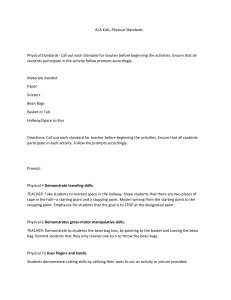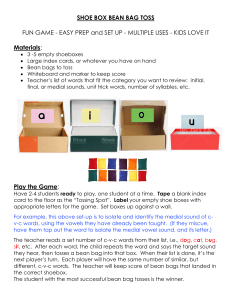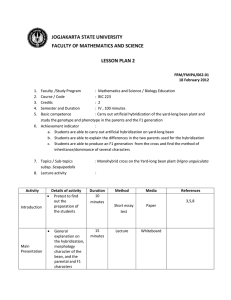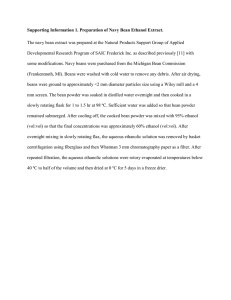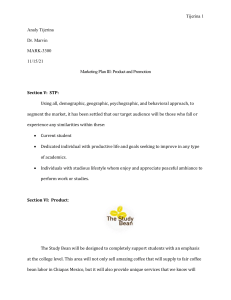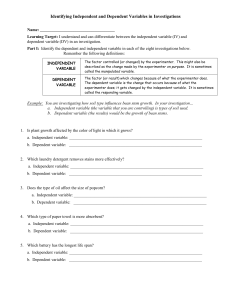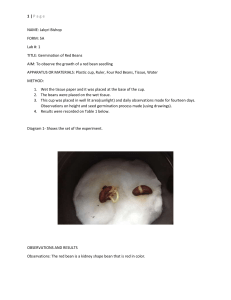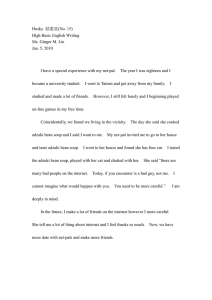Lab Report Format: Science Experiment Template
advertisement
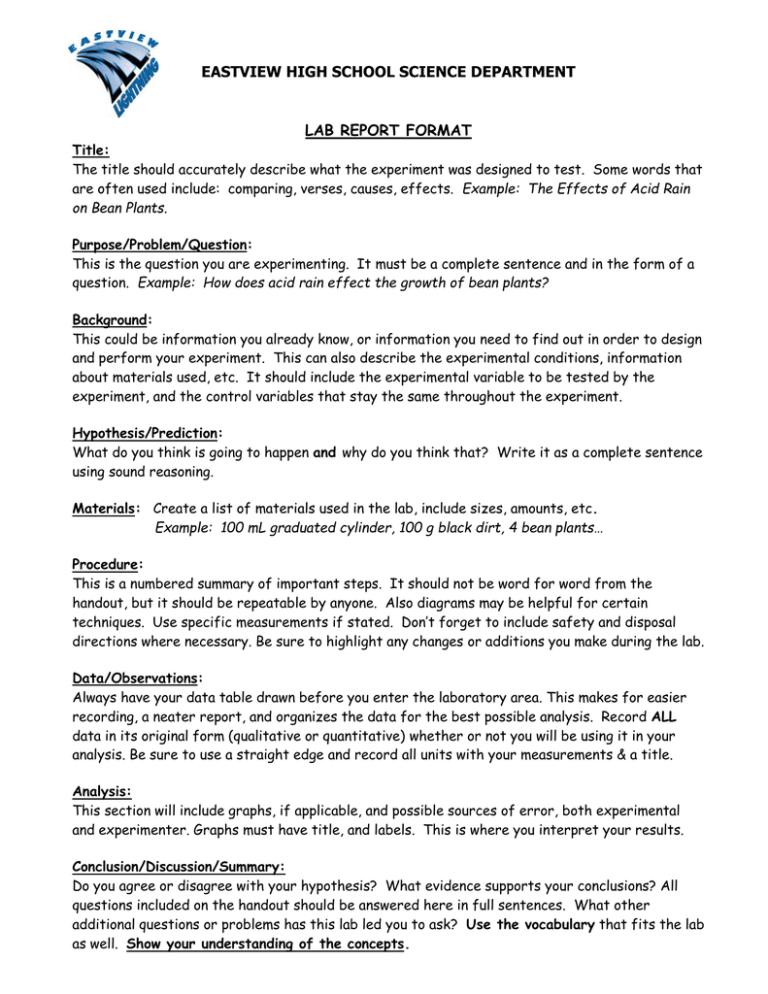
EASTVIEW HIGH SCHOOL SCIENCE DEPARTMENT LAB REPORT FORMAT Title: The title should accurately describe what the experiment was designed to test. Some words that are often used include: comparing, verses, causes, effects. Example: The Effects of Acid Rain on Bean Plants. Purpose/Problem/Question: This is the question you are experimenting. It must be a complete sentence and in the form of a question. Example: How does acid rain effect the growth of bean plants? Background: This could be information you already know, or information you need to find out in order to design and perform your experiment. This can also describe the experimental conditions, information about materials used, etc. It should include the experimental variable to be tested by the experiment, and the control variables that stay the same throughout the experiment. Hypothesis/Prediction: What do you think is going to happen and why do you think that? Write it as a complete sentence using sound reasoning. Materials: Create a list of materials used in the lab, include sizes, amounts, etc. Example: 100 mL graduated cylinder, 100 g black dirt, 4 bean plants… Procedure: This is a numbered summary of important steps. It should not be word for word from the handout, but it should be repeatable by anyone. Also diagrams may be helpful for certain techniques. Use specific measurements if stated. Don’t forget to include safety and disposal directions where necessary. Be sure to highlight any changes or additions you make during the lab. Data/Observations: Always have your data table drawn before you enter the laboratory area. This makes for easier recording, a neater report, and organizes the data for the best possible analysis. Record ALL data in its original form (qualitative or quantitative) whether or not you will be using it in your analysis. Be sure to use a straight edge and record all units with your measurements & a title. Analysis: This section will include graphs, if applicable, and possible sources of error, both experimental and experimenter. Graphs must have title, and labels. This is where you interpret your results. Conclusion/Discussion/Summary: Do you agree or disagree with your hypothesis? What evidence supports your conclusions? All questions included on the handout should be answered here in full sentences. What other additional questions or problems has this lab led you to ask? Use the vocabulary that fits the lab as well. Show your understanding of the concepts.




